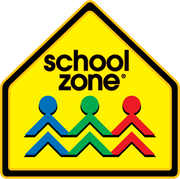Heap up the mashed potatoes and pass the gravy, it’s time for gatherings and good times. At the “kids’ table”? Roll out activities that touch hearts, build skills, and add joy!
Practice thankfulness, creativity, and fine motor skills

More than 2,000 years ago, Roman statesman and philosopher Marcus Tulliius Cicero said, “Gratitude is not only the greatest of virtues, but the parent of all others.” Just how important is it? Harvard Health has reported that “In positive psychology research, gratitude is strongly and consistently associated with greater happiness.” They add that “Gratitude helps people feel more positive emotions, relish good experiences, improve their health, deal with adversity, and build strong relationships.”
The Thoughtful Parent website, in “Super Simple, Research-Backed Ways to Raise a Thankful Child,” notes that “Gratefulness is a key component of kids’ social-emotional development.”
What better all-purpose gift can we give our kids, and what better time than Thanksgiving? And crafting creative gratitude reminders also develops fine motor skills!
The Artful Parent has instructions for producing a centerpiece-worthy gratitude tree. Help kids with painting the stem and branches and cutting out the leaves, along with thinking of things they are grateful for, and you will be achieving at least three things at once!
Or Google “gratitude rocks,” and lots of versions pop up. Help kids paint small rocks and then label them in paint or marker, with things they are grateful for. Scatter them around the Thanksgiving table and encourage guests to take one as an ongoing reminder of family, friendship, and/or gratitude.

After a big meal and a little rest, a walk outside and a breath of fresh air can be just what’s needed. A list of “38 Meaningful Gratitude Activities for Kids,” from We Are Teachers, includes a super fun Nature Scavenger Hunt that suggests participants “Look for something in nature” that (one by one) “makes you smile,” “is your favorite color,” “would make a friend happy,” and yes, “you are thankful for,” among others. Or add your own!
Use manipulatives to multiply math lessons

Just as it’s helpful to turn the concept of gratitude into something tangible, using objects as manipulatives makes math concepts less abstract. And possibilities are as close as the nearest utensil or junk drawer.
A document created for parents by the Calgary Board of Education, titled “What Are Manipulatives?” defines manipulative materials as “any concrete objects that allow students to explore an idea in an active, hands-on approach.” They add that “Manipulatives can be almost anything—blocks, shapes, spinners or even paper that is cut or folded.”
The same source notes that “The power of using manipulatives is that they let the student connect mathematical ideas and symbols to physical objects, thus promoting better understanding.”
Consider something as basic as plastic chips. Counting out two “reds” and five “yellows” creates a strong visual connection between the two tens and five ones that equal 25, a lesson in place value.
As the Build Your Future (BYF) website suggests, “Being able to touch and see something is simply more powerful than only reading about it.”
10 easy ways to do it
Finding useful manipulatives is usually as easy as opening a drawer or cupboard.
Here are 10 ideas:
-- Have kids help set the table. Count out X place settings, i.e., 8 knives, spoons, forks, plates, and napkins.
-- Tell them to go find and gather up 3 of one thing and 4 of another—socks, shoes, dolls, plush toys.
-- Add color to the challenge—3 black or partially black items and 4 yellow, for example.
-- In the kitchen, use pasta, beans, cereal, jelly beans, small candies, or dried fruit to practice counting and addition and subtraction.
-- Put any of those items above in a pile, and using an empty egg carton, ask kids to put an equal number in two of the cups, then three cups, etc., to practice division. Also use the filled cups to practice addition, subtraction, and multiplication, as in “2 cups of 5 = 10.”
-- From other parts of the house, cotton balls, toy cars, blocks, and game pieces will work as manipulatives, too.
-- Use dominoes or dice to help visualize sets using the dot patterns (i.e., a set of 5 dots + a set of 3 dots) practice addition and subtraction, and create two-digit and, with three dice, three-digit numbers.) Roll the dice and shout out an equation: 3 + 6 = ? and ask kids to shout out the answer.
-- Use a deck of playing cards to teach sets, number recognition, evens and odds.
-- Use nickels, dimes, and quarters to teach addition, subtraction, and skip counting by 5s, 10s, and 25s.
-- Use straws or toothpicks to create shapes such as squares, triangles, or when cut and/or combined, rectangles and isosceles triangles, a foundation for geometry.
Let this Thanksgiving inspire abundant ways to express gratitude and develop skills with little cost and big rewards.












